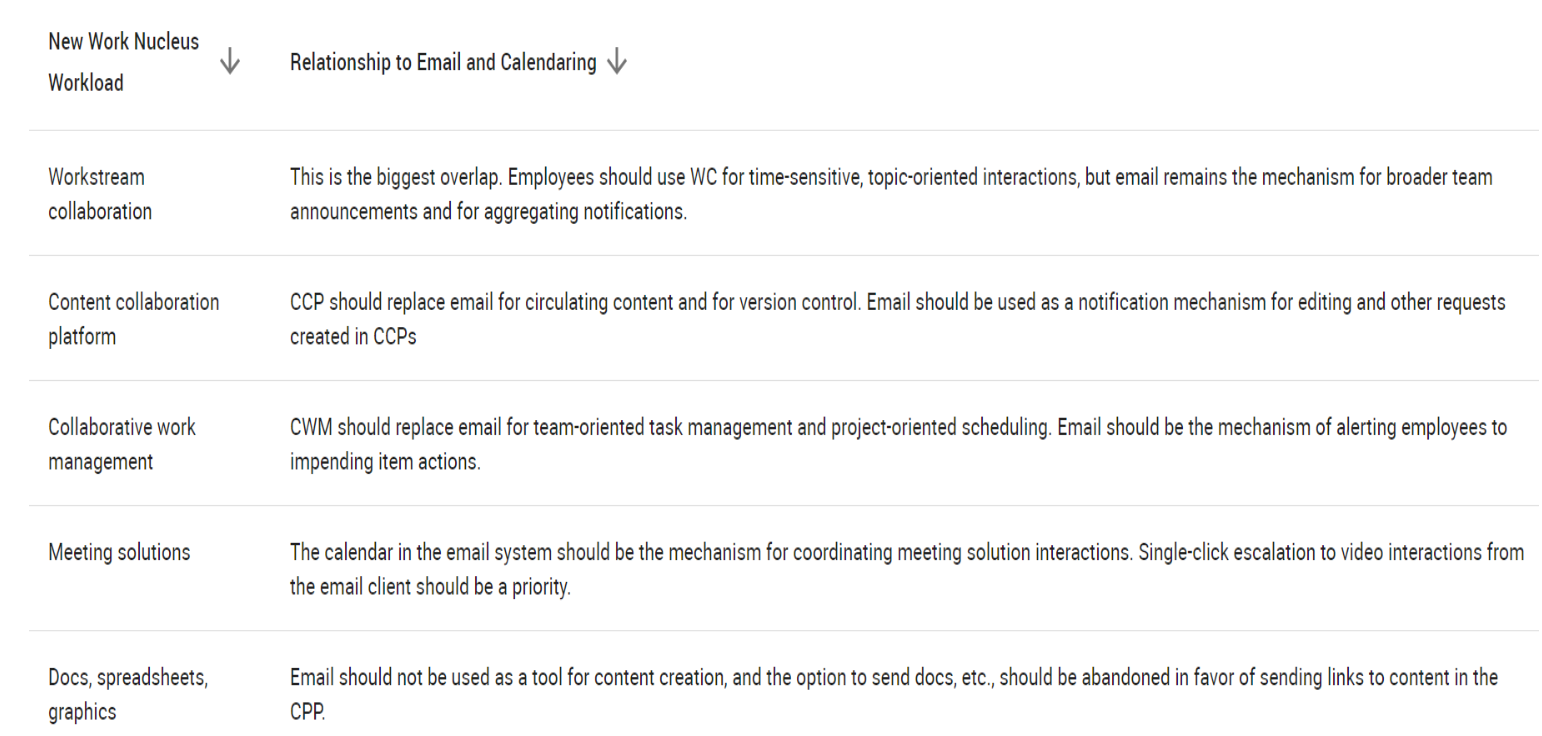Email Best Practices
Email Usage
Email has been broadly used for 3 decades
In spite of predictions of its death it keeps on cranking
For most employees, email is the first and last application they check every day, and hover around it (via desktops and mobile devices)
throughout
While email consumes the most time of all personal and team
productivity applications, little effort is made helping workers use email more effectively
There are no common rules of etiquette, and employees are rarely educated on significant new features that allow them to process email more effectively
(such as the “ignore/mute” button, new ways to sort messages, right mouse click options, unsubscribe, etc.).
Email in the New Work Nucleus
Email is the default choice for communicating with customers and partners.
Email is the primary mechanism for aggregating alerts and notification from other
applications.
Email is the mechanism for “communications of record.” Properly stated, it is the default way of communicating with another employee if there is no previous relationship.
Gartner
Email serves as the primary mechanism for communicating out-of-office status.
Email calendars serve as the default mechanism for coordinating schedules.
Email is the mechanism for general-purpose communication, and as activities get more specific, purpose-driven and time-sensitive, other new work nucleus modes are more appropriate.
Email is the default mechanism for circulating official team, business unit and organization management directives.
Gartner
Relationship of Email to the Other New Work Nucleus Applications

Gartner
Good Habits and Practices
If you struggle with volumes and organizing; have a system for yourself. It’s important you stay on top of your emails.
Devote time at the start and end of each day to email
Create Rules; use folders to manage lower priority, high volume and parked emails;
color codes, etc. to help organize and prioritize your inbox
"Prioritize responding to meeting invitations"
Make sure Email is the right mode of communication. One short meeting is much more productive than a dozen emails. Old fashioned talking still is effective. Also, Applications like MS
Teams, Zoom, Google Meet etc. make communications and collaborations easier.
Make the Subject Line meaningful. It helps the receivers.
Pay attention to and effectively use CC, BCC
BCC is a good option to let someone off the chain after the original email
Avoid emails with long text – people don’t read them.
If you’re looking to communicate a substantial amount of information, attachments or hyperlinks are a better option
(It’s common to see the first view of an email on a phone or tablet, not conducive to a lengthy reading; shorter attention spans).

Don’t copy “the world”
if you’re looking for information from 1 individual. It can imply you’re putting someone on the spot. Inside of Sony Music, we’re on the same team. I often do not hit “reply all.”
Don’t email when angry.
Cool off. Take a breath. Come back to it later.
If you are sending an email to multiple individuals
but your comments, questions or requests are
directed at any single individual make sure you let that individual know at the top of your email.
Assume all emails could be forwarded
and on that basis,
don’t write something you’d be
uncomfortable with if it was exposed to others
Be careful what you forward from others too.
Don’t send potentially upsetting emails on a Friday, you might ruin somebody’s weekend.
“Delay Delivery” is a useful function.

